Motorola Moto G51 First 5G Phone of Motorola – Full Review

Specs and introduction:
The Motorola Moto G51 5G is meant to be the successor to the Moto G50 5G, but given that the two phones were released less than four months apart, one could argue that the newer model is simply a hardware refresh. Nonetheless, the G51 has more powerful hardware in some areas. Given that it’s a phone for the end of 2021/beginning of 2022, it’s safe to believe that it’ll be Motorola’s leading low-end, 5G-enabled solution for the year, replacing the Moto G50 5G.
The G51 was unveiled alongside other Moto phones, and it appears to be a cross between the Moto G71 5G and the Moto G200 5G, as it shares parts of their components. The G51 is distinguished by its chipset, Qualcomm’s low-cost 5G option, the Snapdragon 480+. Of course, it’s the cheapest of the group, as the name says.
At a glance, these are the specifications for the Motorola Moto G51 5G:

- Glass front, plastic body; IP52 water-repellent design; 170.5×76.5×9.1mm, 208g
- 6.80″ display “IPS LCD, 120Hz, 1080x2400px resolution, 20:9 aspect ratio, 387ppi, IPS LCD, 120Hz, 1080x2400px resolution, 20:9 aspect ratio, 387ppi
- Octa-core (2×2.2 GHz Kryo 460 & 6×1.8 GHz Kryo 460); Adreno 619; Qualcomm SM4350-AC Snapdragon 480+ 5G (8 nm)
- MicroSDXC memory: 64GB 4GB RAM, 64GB 6GB RAM, 128GB 4GB RAM, 128GB 6GB RAM, 128GB 8GB RAM (uses shared SIM slot).
- Android 11 is the operating system and software.
- Wide (main): 50 MP, f/1.8, 1/2.76″, 0.64m, PDAF; Ultra wide angle: 8 MP, f/2.2, 118, 1/4.0″, 1.12m; Macro: 2 MP, f/2.4, 1/2.76″, 0.64m, PDAF; Macro: 2 MP, f/2.4, 1/2.76″, 0.64m, PDAF; Macro: 2 MP, f/2.4, 1/2.76″, 0.64m,
- Wide (main): 13 MP, f/2.2, 1.12m – worldwide; Wide (main): 16 MP, f/2.2, 1.12m – China only.
- Video capture: 1080p@30/60/240fps for the rear camera; 1080p@30fps for the front camera.
- Battery capacity: 5000mAh; fast charging: 20W for India, 10W for the rest of the world.
- Other features include a side-mounted fingerprint reader, an FM radio, and a 3.5mm jack.
“It has the same 5,000 mAh battery as the G71 5G and has an IPS LCD with 1080 x 2400px resolution. It also has the same camera arrangement as the G71 5G (50MP+8MP+2MP). However, it utilizes a nearly identical display to that of the G200 (6.8 inches). Regrettably, the worldwide unit’s charging speed is limited to just 10W. However, India receives much faster 20W charging.
The Moto G51 5G has only a few direct competitors at a starting price of around €230, making it an entirely sensible 5G solution that is also reasonably good for multimedia consumption. Although there are no stereo speakers, the massive 120Hz display, large battery, Dolby Atmos audio capabilities create a compelling argument.
Let’s take a closer look at the G51 to see if it’s any good at photography and if there are any more robust competitors.
The Motorola Moto G51 5G is Unboxing:

The item is packaged in a regular box with the standard user manuals and a 10W charger with a USB-A to USB-C connector. The Indian version of the phone comes with a 20W charger. As a bonus, a transparent silicone case is included.
The G51, like other Motorola phones, comes with a subpar USB cord. The cable can only be used for charging and does not permit data transfers. So, unless you have a spare USB-A to USB-C cable laying around, you’ll have to buy one separately to connect the phone to your PC.
Ergonomics and Design:
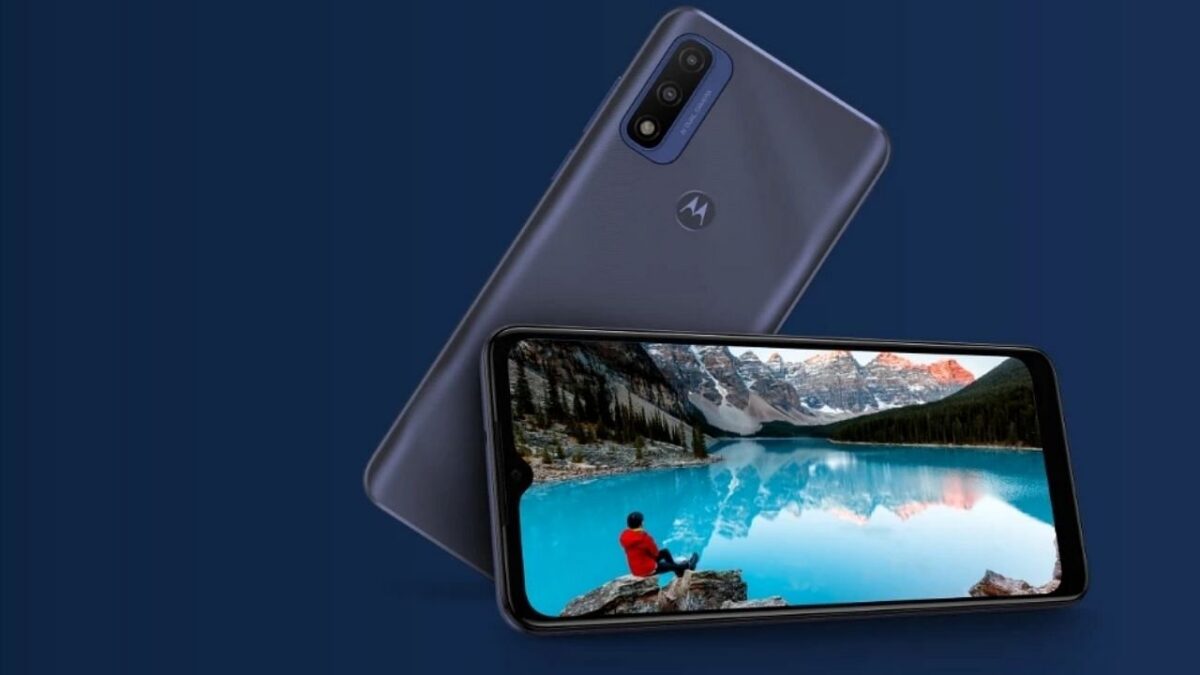
The Moto G51 5G has a similar design to the Moto G71 5G but differs slightly from its predecessor. We’re back to a plastic unibody chassis. The matte coating on the Indigo Blue hue we received attracts fingerprints to some extent; however, they are barely apparent in most situations. The surface is also remarkably grippy, or at the very least not slippery.
Surprisingly, the camera module on the phone’s rear is barely visible. It’s pretty flat compared to others, doesn’t cause the device to wobble when placed on a table, and the separate camera sensors protrude by less than a millimetre. Like the G71, they’re vertically stacked as well.
This Moto smartphone, like other Moto smartphones, has a water-resistant build, and it has an IP52 rating this time. It will almost certainly survive a fall into the pond or sometime in the rain.
The display has a slight curvature, and the entire back piece is pleasantly curved, adding to the overall pleasant experience. There are no jutting or harsh edges, and the whole chassis has a smooth feel. There are undoubtedly better models, but we must first examine Moto G51’s pricing point.
Despite its gripping nature and superb ergonomics, we have a problem with the button location. The power button and fingerprint reader combination are a little too high. It may be difficult for people with tiny hands to reach it. The volume rocker and the Google Assistant button are the most problematic features. They’re both above the power button, which is unreasonably high for a tablet with a 6.8-inch display and necessitates a lot of finger gymnastics.
On the front, there’s nothing unusual. The phone’s wide display is bordered by tiny side bezels and slightly thicker top and bottom bezels. A pretty sizeable centred-punch hole camera is also there, although that’s expected from a phone in this budget bracket
The loudspeaker grille, USB-C connector, and 3.5mm audio jack are located on the bottom side. The hybrid SIM card tray is the only thing on the left side. Only a microSD + SIM card combo or two SIM cards are available.
However, we are amazed that this phone weighs 208 grams despite its all-plastic construction. The large display and battery capacity add to the total weight, but anything above 200 grams is noticeable in regular use. Furthermore, the device is top-heavy, making it unsuitable for one-handed operation.
The LCD is Quick and Bright:
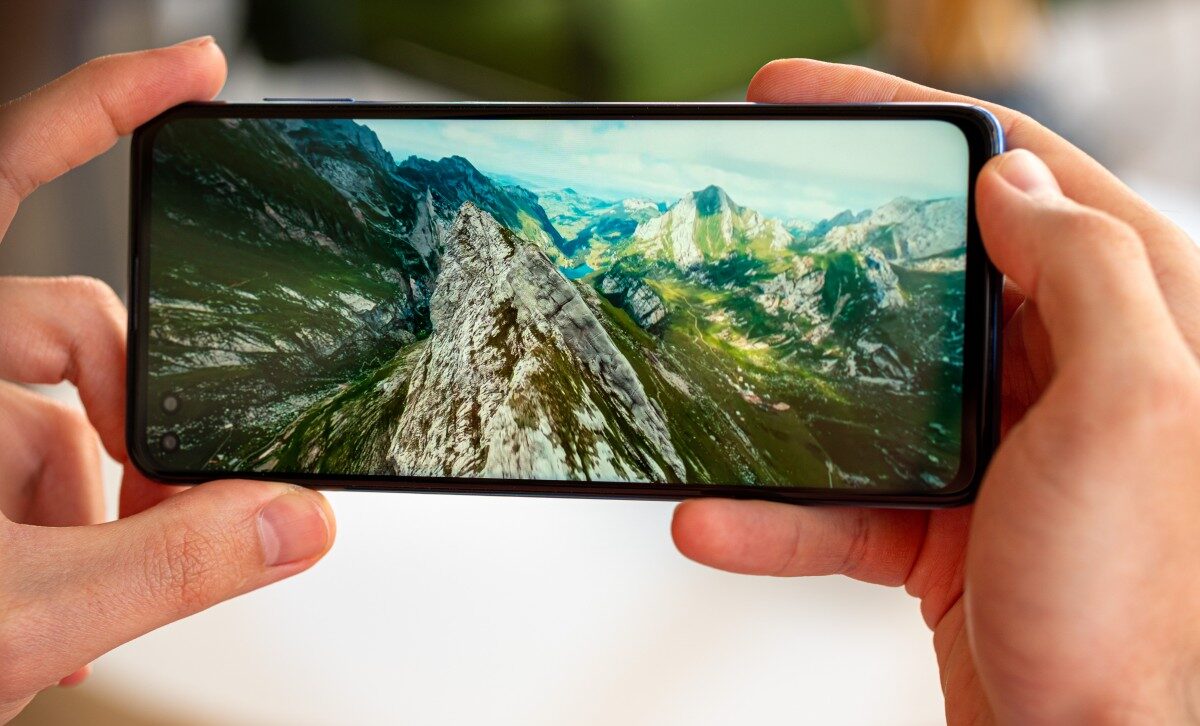
Although the Moto G51 5G has the same 6.8-inch screen diagonal as the Moto G200, the panel below is not the same. The Moto G51, as a more budget-friendly option, “settles” for a 120Hz refresh rate rather than 144Hz, but the vast majority of users will find it wonderfully pleasant. Especially if you’re upgrading from a 60Hz or even 90Hz panel. The resolution is 1080 x 2400px and the aspect ratio is 20:9. These days, it’s rather standard. This IPS LCD panel does not have any HDR certifications, but we didn’t anticipate it to have any in the first place.
On the other hand, the display surprised us with a respectable 595 nits in Auto mode, which should be plenty for comfortable outdoor use. You can achieve up to 498 nits using the manual brightness adjustment, which is also decent.
Of course, the colour fidelity isn’t perfect, and whites and greys, as is often the case, appear overly blue-ish. Other hues are very saturated as well. Going to the Natural colour option in the settings menu is a simple method to solve this. It gives white a pinkish tint, but it’s much more tolerable. It did, however, reduce the average dE2000 to 2.8, which is an excellent result. Motorola has also included a colour temperature slider, so you can preserve the intense colours in Saturated mode while reducing the blue-ish tinge.
Moving on to refresh rate control, Motorola was one of the first OEMs to integrate some form of intelligent real-time correction, which we can see here as well. It’s straightforward but effective.
It appears that the system detects video players and switches to 60Hz. The display will reset to 60Hz if you do not touch it. Except for the Google Photos gallery, and when watching movies, it would run everything at 120Hz otherwise. The refresh rate would drop quickly if YouTube or Netflix were launched.
Given the chipset’s cheap nature, there aren’t likely many games that can go past 60 frames per second, if any at all; thus, you won’t be able to use the HRR panel while gaming.
Battery Life:
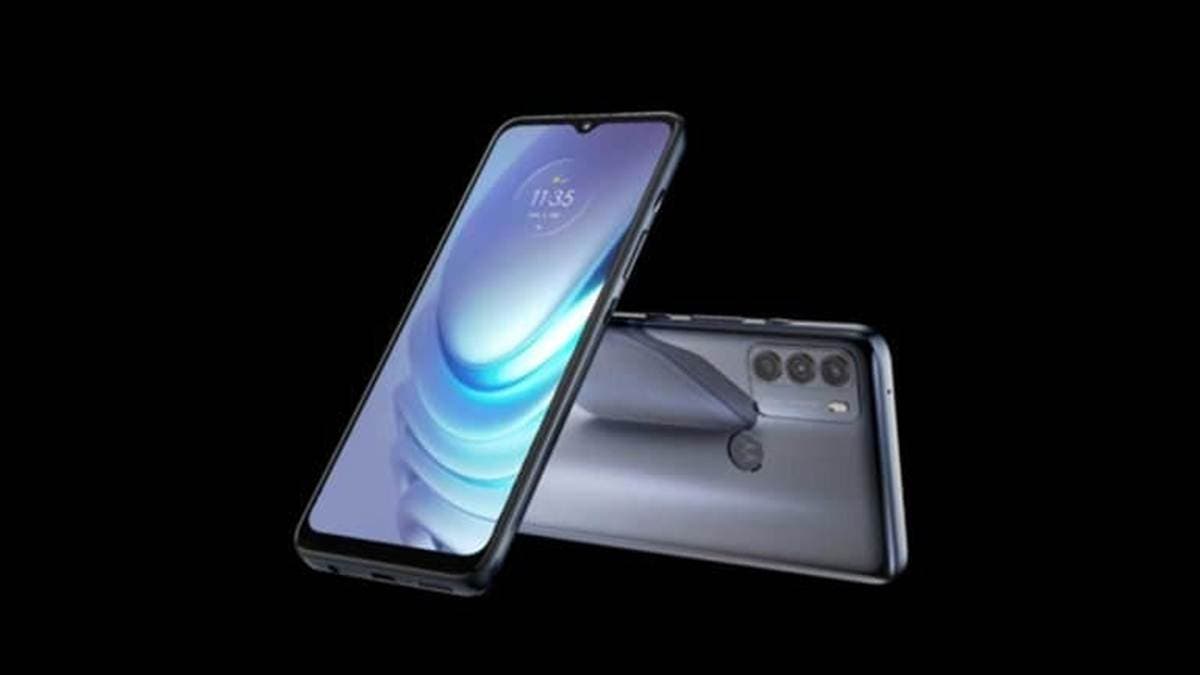
Because the Moto G51 has a Snapdragon 480+ SoC and a large 5,000 mAh battery, the results of our battery tests aren’t surprising. When watching films or browsing, the gadget can last for hours. The standby times are also respectable, which, when paired with the exceptional screen-on performances, puts it well ahead of the competition. The overall endurance rating of 124 hours is outstanding.
Surprisingly, the Moto G51’s total battery life is lower than the Moto G50. Despite having nearly identical standby and 3G talk time scores, the G50 received a much higher score of 133h because of its superior web browsing and video playback.
Charging Speed:
Surprisingly, only the Indian form of the phone supports 20W charging, while the global version settles for a less-than-ideal 10W. We could even argue that this is unacceptably low for a phone due out in the second half of 2021. A 15W charger is included with the Samsung Galaxy A22 5G.
We mean to say that charging this large 5,000 mAh battery takes a long time, as we only received 26% of the juice back in the 30-minute test, and a complete charge from 0 to 100% took 2 hours and 35 minutes.
Speaker:
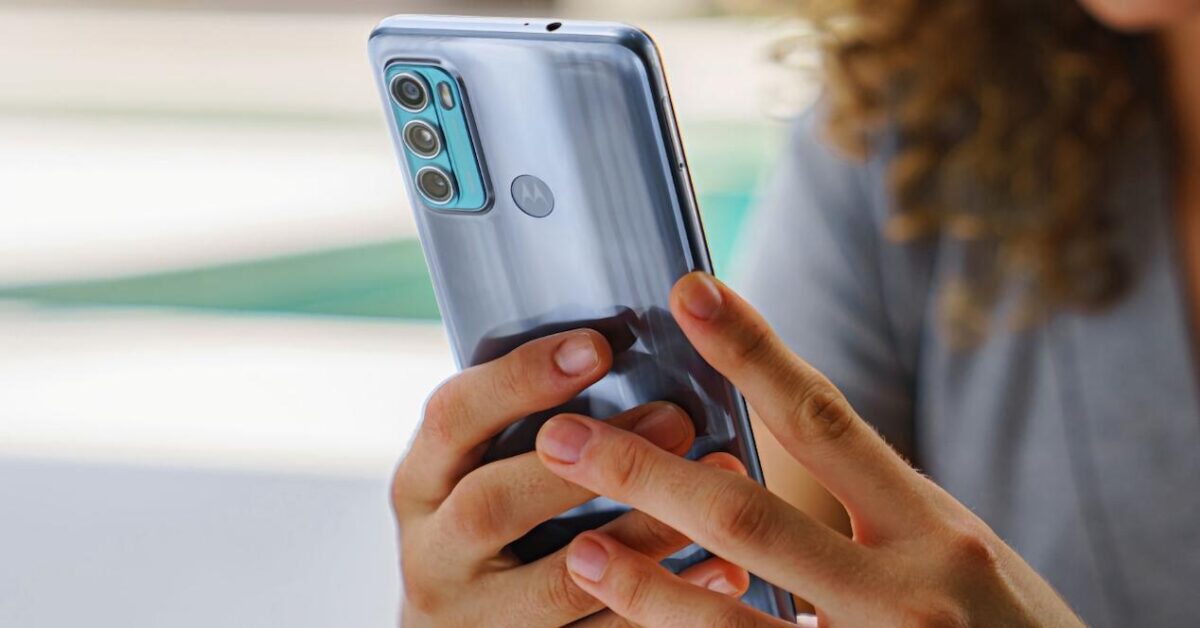
Except for a few Xiaomi’s, including the Poco X3 Pro, which is one of the Moto G51’s direct competitors, the Moto G51 has a single, bottom-firing speaker, which is pretty much usual at this price point.
In our 7-track test, the phone’s single speaker scored -28.3 LUFS, earning it an “Average” rating. The Poco X3 Pro sticks out from the crowd as it is noticeably louder with its twin speakers.
The G51 sounds very flat in terms of quality, and distortion begins to seep in at higher volumes. But none of this is shocking.
Still a squeaky-clean Android 11 with a few Moto extras
Motorola’s “clean approach” to Android has been a significant selling point for its phones, but its recent history of delaying major updates does not bode well for the company. The Moto G51, for example, ships with Android 11 rather than Android 12, but we can overlook that considering the device’s official release date, which was not long after Android 12 was released, and the fact that most midrange released after October last year are still running Android 11. Even so, that would have been a lovely addition to have.
The software is identical to that of the Moto G50, which we evaluated in mid-2021 and which runs Android 11 and has the same Moto-specific features. This is contained in a single settings interface, complete with tutorials.
The Moto app greets you on the home screen, but you can also access the settings through the main settings menu. When you initially start it up, it will give you a quick rundown of the functions. App icon packs and shapes, typefaces, accent colours, and even quick toggle icons for the notification shade are all available in the Styles sub-menu. The customizing choices take centre stage, with a large selection of stock wallpapers, some of which are interactive, to choose from.
The brightness slider is located on top of the toggles, and there is no quick switch between adaptive and manual display adjustment, which is a bit frustrating. We’re also accustomed to seeing the slider below the toggles for more temporary thumb access. We discovered that the slider was frequently utilized, so why not make it more accessible?
The Gesture area dates back to the Moto G series’ early days, as some of the various screen-off gestures are familiar to Motorola users. A karate chop motion activates the flashlight, a wrist twist activates the Camera, and a lift to wake gesture appears to function well in conjunction with the face unlock. In most circumstances, when reaching for your device, you don’t even have to touch the fingerprint reader.
This leads us to the Peek Display and Attentive Display display-related features. The former is enabled by default and allows the lock screen to wake up when the phone detects motion. It would show the time and any notifications. You can interact with the reports, conduct a rapid reply, or dismiss the message depending on the settings you pick. To interact with the notice, tap and hold the app icon from the lock screen.
The Attentive Display, the system detects your face using the front Camera and keeps the display on, ignoring the screen timeout limit. It’s especially beneficial if you’re reading a long article and your screen timeout is too short.
With Android 11, you’ll access some of Google’s most fundamental features. The slideshow covers the new chat bubbles, Nearby Share, the redesigned power menu design, one-time permissions, and notification segregation in the notification shade for active discussions. Even though these functions are not exclusive to Motorola, the business has logically structured them within the Moto app.
Chat bubbles are arguably the most significant feature among the ones listed above. As an overlay on top of your programs and home screen, you can launch the chats in tiny, interactive bubbles. Essentially, all chat applications that support Messenger’s Chat Heads should be pretty much all of them by now.
The Overcharge protection setting in the Battery menu is a relatively new function that differs from Optimized charging. The latter adapts the charging curve based on your charging habits, so the battery doesn’t spend too much time ultimately charged before you disconnect the gadget in the morning. On the other hand, the Overcharge safeguard will stop charging if the phone hasn’t been unplugged for three days in a row. Therefore, it will maintain a more healthy 80 per cent charge on the battery.
Finally, the speedy and responsive fingerprint reader must be mentioned. Even with this low-end chipset, the device unlocks with a light and a brief touch of the scanner. As we said in the Design portion of the review, our only criticism is the reader’s high posture.
Aside from that, the OS functioned flawlessly with no significant issues. Except for activating several apps, we didn’t observe any significant slowdowns. Perhaps the Snapdragon 480, which has been well-optimized, will be enough to run Motorola’s practically stock Android. The UI isn’t too busy to look at, and it doesn’t tax the hardware with too many effects or animations.
Performance:

With a Snapdragon 480+ SoC, the Moto G51 5G delivers a slight boost in raw horsepower over the Moto G50 5G. It’s essentially the same as the non-plus version introduced in early 2021, but it adds 200 MHz to its two central cores and replaces the 5G modem with a stronger one. And by better, we mean it can theoretically attain faster upload rates, so this isn’t a feature worth fretting over.
In any case, the two central Kryo 460 Gold cores (Cortex-A76 derivatives) are clocked at 2.2 GHz (rather than 2.0 GHz), while the remaining six energy-efficient Kryo 460 Silver cores (Cortex-A55 derivatives) are clocked at 1.8 GHz. Graphically heavy tasks are handled by the same Adreno 619 GPU.
The G51 comes with memory options of 4GB/64GB, 6GB/64GB, 4GB/128GB, 6GB/128GB, and 8GB/128GB. A microSD card can be used to expand the storage—nothing out of the ordinary here.
The Moto G51’s raw horsepower appears to be its weak point. Several devices are equipped with chipsets that provide superior single- and multi-core performance and improved performance in mixed workloads. However, the Adreno 619 GPU appears to be powerful enough to propel the Moto G51 to the top of our rankings. In GPU-intensive tasks, it consistently outperformed Snapdragon 678 and SD662 devices. However, in pure CPU-bound tests, the Snapdragon 480+ falls short. The Density 700 5G SoC is also a viable solution, mainly as it includes a built-in 5G modem.
A triple-camera configuration with a 50MP primary unit is standard:

The Moto G51 borrows the Moto G71’s camera configuration on the back. The Moto G51 replaces the Moto G50’s worthless depth sensor with an 8MP ultrawide snapper with an f/2.2 aperture and a 118-degree field of view. The sensor is widely utilized in devices ranging from low-end to upper-mid-range, and it’s a small one – it’s only 1/4.0 inch in diameter “with a resolution of 1.12m pixels. The 2MP macro Camera is still available.
The primary camera has a resolution of 50 megapixels, an aperture of f/1.8, and a shutter speed of 1/2.76 second “with a resolution of 0.64m pixels; although it has a better explanation than the 48MP Camera on the G50, it has a much smaller sensor and pixels. We’ll have to wait and see how that converts into photography.
The 13MP selfie camera has an f/2.2 aperture and 1.12m pixels, while the 16MP variant is exclusively available in China.
Menu for the Camera:
Motorola’s Moto Camera software, version 6, is installed on the phone and is updated via Google Play. Compared to prior Moto devices we’ve examined, the UI hasn’t changed significantly. The so-called “hamburger menu” contains all modes, and the previous method you used is saved on the main mode carousel.
A quick swipe up from the shutter button brings up additional settings for each Photo or Video mode.
We want to look at the resolution issue that has plagued Motorola devices for years. A resolution selection is available for both the primary and ultrawide cameras. And as you may be aware, the native resolutions of these two cameras are vastly different: 12.5MP vs 8MP. Both cameras’ solutions will be forced if you choose one of those options. Stills taken with the ultrawide Camera will be upscaled from 8MP to 12.5MP, resulting in sub-optimal quality, which is already low on the auxiliary cameras. But, as we’ll see later in the Camera Quality section, there’s more to it.
Samples Taken in Daylight:
The primary Camera:
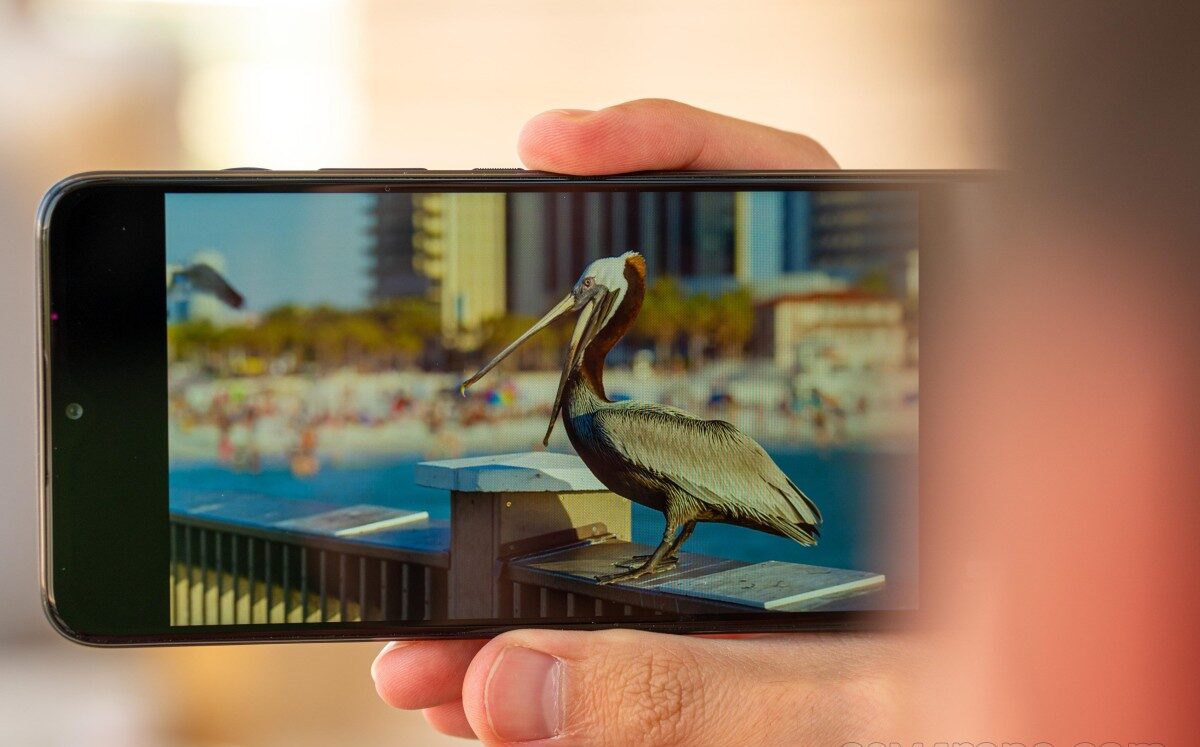
The primary camera captures images with bright, pleasant colours that aren’t garish. Sure, the shadows have some grain, but that’s expected from a budget phone like the G51. Even when shooting indoors, the stills are generally sharp, the dynamic range is adequate, and noise is mostly well controlled.
With a few notable exceptions, the picture quality of the primary Camera is about on pace with the competition. The software prefers a slightly greater exposure, leading to clipped highlights. Some of the building’s edges have a fuzziness to them. In addition, fine detail might be squashed in the shadows.
Instead of binning your stills down to 12.5MP, you can use the full 50MP resolution of the Main Camera. However, there’s no benefit because photographs become coarser and softer, and HDR isn’t available in that setting.
Wideview Camera:
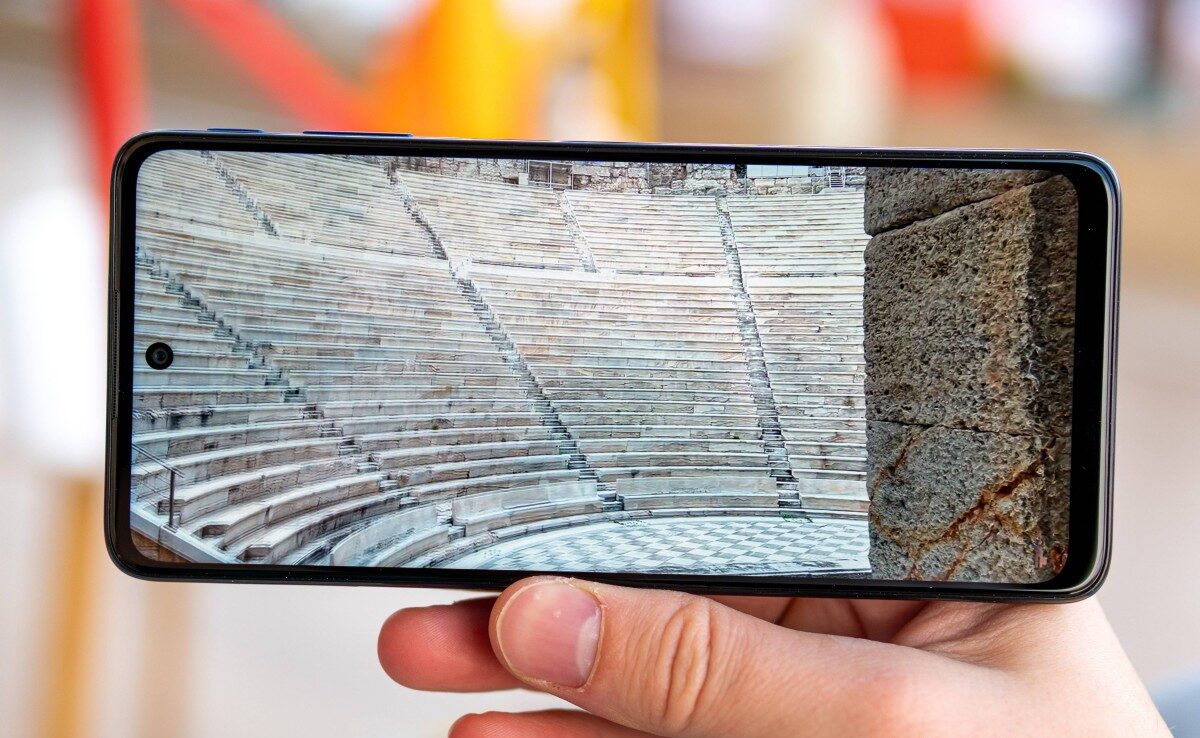
The ultrawide Camera delivers images that meet our expectations. They are often soft lack dynamic range and detail in this price range. So there are no shocks here. There’s also a lot of colour fringe and noise all over the place. Unfortunately, the photographs are slightly softer than the competitors due to the upscaling from 8MP to 12.5MP.
However, Motorola appears to have tweaked the colours just enough to make the shots more appealing since the colours aren’t washed out, and the barrel distortion algorithm straightens out the photos well.
Samples at the Macro Level:
There isn’t much to discuss here. The G51’s 2MP sensor delivers precisely what you’d expect. Due to the low resolution, contrast is limited, and the detail is poor. Because the lens has a fixed focus distance, getting a sharp image in focus. It’s tough when dealing with moving objects like insects or swinging flowers.
Samples Taken in Low light
The Primary Camera:
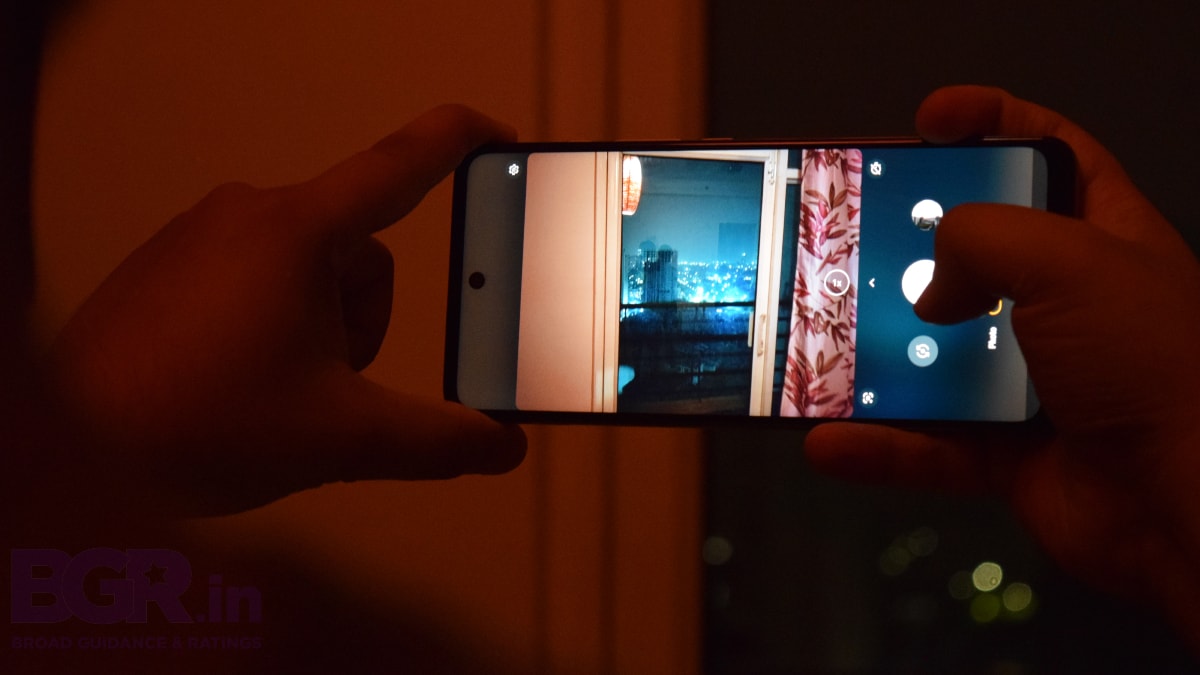
Without the Night mode, the low-light images are pretty good. They are, without a doubt, a little mushy and lacking in fine detail, but that isn’t surprising. Except for the tiny, clipped highlight areas, we enjoy the relatively accurate colour reproduction, outstanding contrast, and wide dynamic range. Keeping clarity in the shadows without clipping all of the highlights is quite excellent, and noise is kept to a degree. This leads us to conclude that the noise reduction algorithm is overworked, resulting in the buildings’ smooth surfaces.
Going with the Night mode, which doesn’t take as long to stitch the required frames, can sometimes add more colour, improve contrast, and sharpen the image significantly. Clipped highlights are also addressed, although we noticed that the exposure in some photos was excessive, resulting in clipped light sources. The sharpening enhancement also introduces a lot of fine grain throughout the area. Because the Night mode will differ from scene to set, we recommend shooting a shot using both the usual Photo mode and the Night mode and selecting which one appears better.
Wideview Camera:
In low-light situations, the ultrawide Camera struggles, making it challenging to advocate using it at night. The images are murky, lack contrast, are washed out, and have a limited dynamic range. The ultrawide doesn’t have a Night mode either.
Portraits:
The Moto G51 achieves a convincing bokeh effect with complex background and foreground objects even without the depth sensor. The subject’s face is always well exposed, and the colours are punchy and vibrant, resulting in an excellent dynamic range. However, it may cause the skin to pale at times. We didn’t like the high noise, even in good lighting circumstances, and the lack of fine detail across all samples.
Selfies:
If the right lighting conditions are met, the selfies are decent enough, with an excellent dynamic range and a good level of detail. Even when there is enough indoor lighting, sharpness and detail deteriorate quickly as the light drops. Perhaps the colours could be a little brighter, as the subject’s skin was frequently paler than it should be.
Portrait selfies are a little rough around the edges, and the dynamic range is narrower because HDR is disabled. On the other hand, the program always prioritizes the subject’s face, ensuring that it is appropriately exposed.
Making a Video:
The Moto G51’s main and ultrawide cameras can only shoot 1080p videos due to the chipset’s restrictions. Except for the Poco X3 Pro, which can achieve 4K, most phones in this price bracket are confined to 1080p.
Even with the 1080p resolution in mind, the example video below is not sufficiently sharp. The colours are washed out, and there is no detail, even fine detail. The dynamic range is likewise lacking, with highlights clipped in the background and deep shadows washing out any party.
Competition:
The sub-€250 pricing bracket is somewhat crowded, but only a few competitors offer a 5G connection, which gives the Moto G51 a leg up. By increasing the screen resolution, using an up-to-date processor, and providing a high refresh rate screen, the gadget also corrects some flaws in previous Moto devices. As a result, we’ll start with the few 5G-enabled options before moving on to the non-5G alternatives worth considering over the Moto G51 5G.
The Samsung Galaxy A22 5G is one of the first handsets that come to mind, thanks to its capable Dimensity 700 5G chipset, large 6.6-inch IPS display, and well-liked One UI. The two handsets are nearly identical; however, the Moto G51 has a smoother (120Hz vs 90Hz) and brighter display, slightly longer battery life, and superior Camera stills in almost all settings.
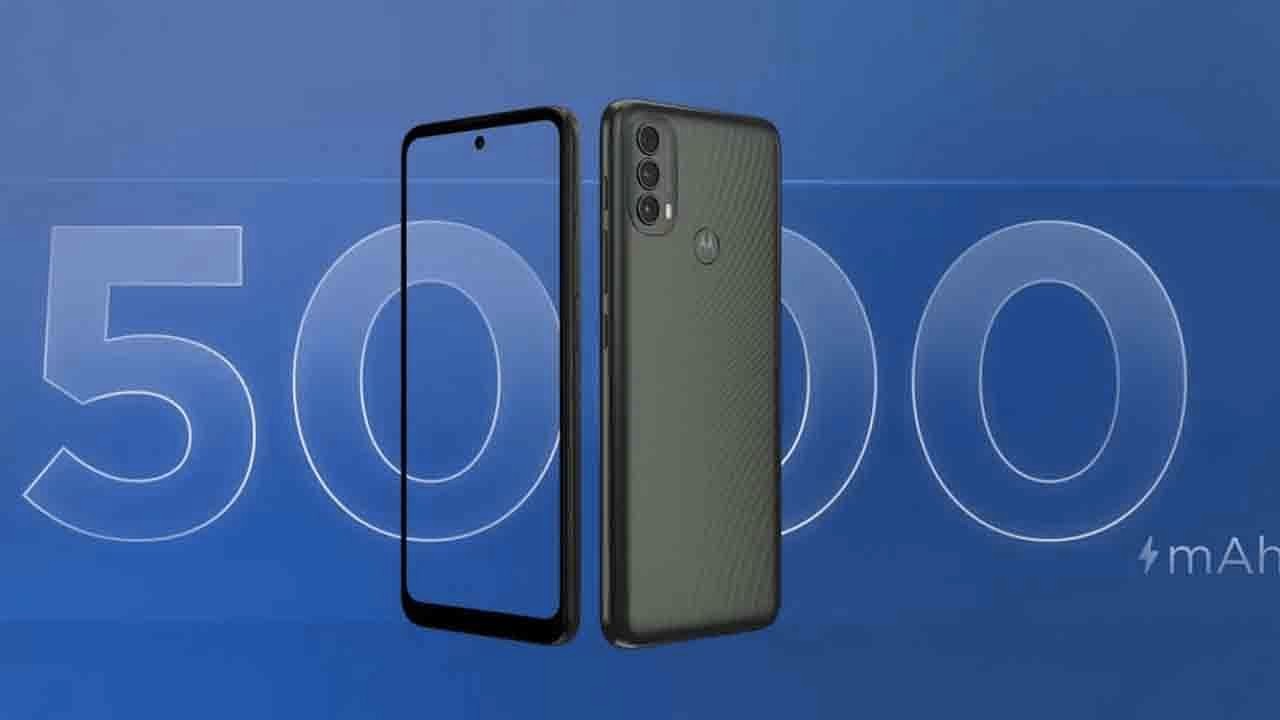
Even though the Realme 9 family is just around the corner, the 8 5G is a viable option that costs between €200 and €250. However, when compared to the Realme 8 5G, the difference is less clear. With its quicker Dimensity 700 5G chipset, identical battery life, faster charging, and arguably better camera capabilities, the Realme 8 5G may still win over certain users despite the lack of a high refresh rate and an ultrawide camera (which isn’t a significant omission as you can see in the review).
However, if 5G isn’t a priority, the Xiaomi Poco X3 Pro is still unsurpassed in these sections. It costs around €250 (or less depending on where you shop) and is better equipped for the job. It has a superior 120Hz IPS display with Gorilla Glass 6 protection, IP53 dust and splash certification, a lightning-fast Snapdragon 860 chipset, more base storage (128GB), better photography skills stereo speakers, faster charging, and comparable battery endurance. In the mid-€250 range, this phone is a no-brainer.
Another Xiaomi device worth considering is the Redmi Note 10. It’s speedier, has a brighter OLED display, charges faster, and shoots better pictures. The successors are already here, but with a €230 price tag, it’s still a device worth mentioning.
Conclusion:
Overall, the Moto G51 is a well-balanced 5G solution, mainly if it is released in the United States. Only a few 5G-enabled alternatives are available in this price bracket, so the G51 is a good fit. Of course, this assumes that 5G is a key priority.
Unfortunately, 5G isn’t yet available in most countries, so if you’re prepared to “settle” for the 4G LTE network for the next few years, other models may be a better fit.
Long battery life, a large, brilliant, and crisp display, and good camera performance are all good, but they aren’t enough to distinguish the G51.
Pros:
- The screen is large, bright, and has a high refresh rate.
- Comfortable ergonomics and a water-repellent design.
- The battery life is excellent.
- For the most part, camera performance is adequate.
- Experience Android in its purest form.
Cons:
- Slowly charge (at least on the 10W model).
- There is no way to record 4K videos, and the quality is only 1080p.
- There are many more powerful alternatives available.
- The USB cord can only be used for charging and not for data transfers.
- The right side is packed with buttons, and the arrangement isn’t ideal.
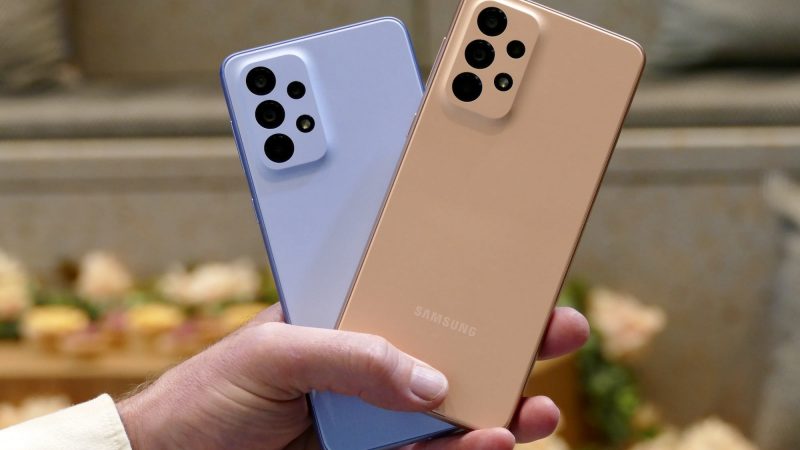
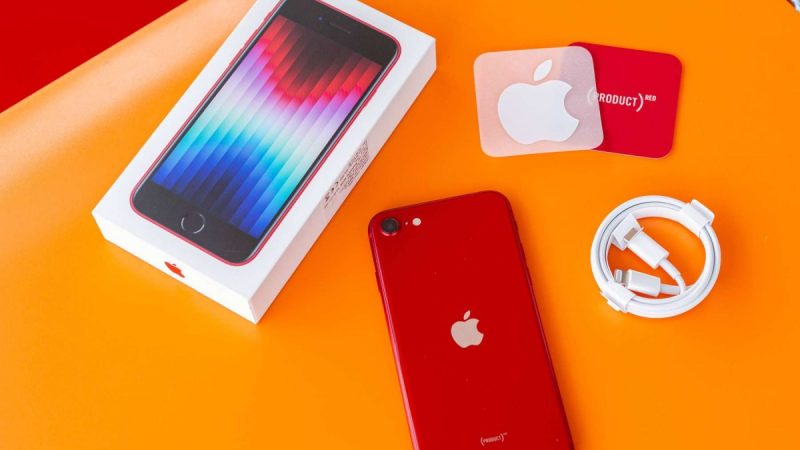
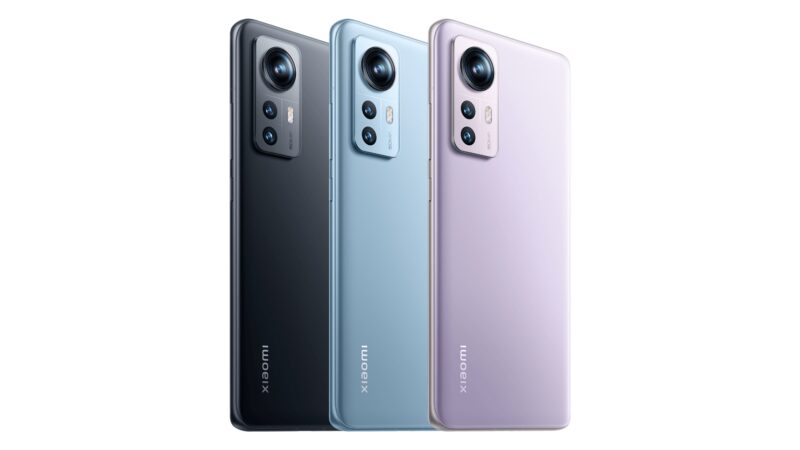
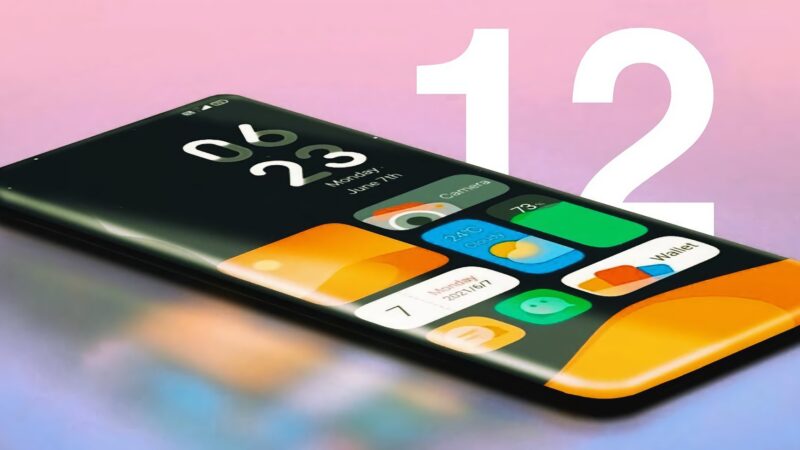

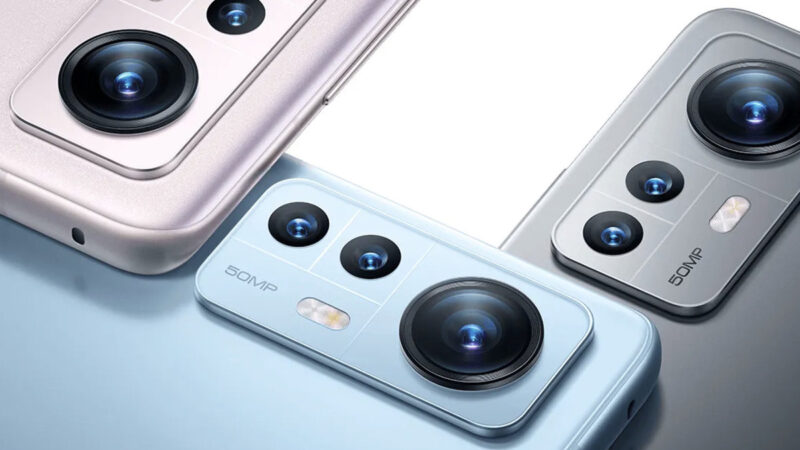
Hello there! This blog post could not be written any better! Looking through this post reminds me of my previous roommate! He always kept preaching about this. I most certainly will forward this information to him. Pretty sure he’ll have a good read. I appreciate you for sharing!
Thank you for your appreciation ALI, Hope your rommie will like that too!